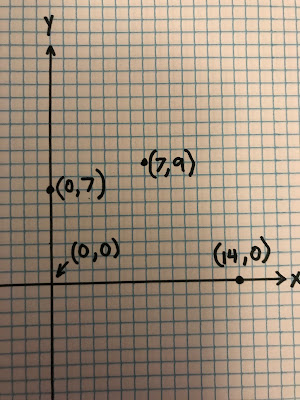Some people don't learn from visuals like the ones I posted last night, so I want to give a couple of examples of the normally-written math problems that you may come across in your everyday life. But first, I want to give a couple of vocabulary words that may help with your understanding.
integer: a whole number, either positive or negative
absolute value:
As you can see, the absolute value of the ten is higher than the absolute value of the seven, because 10 is greater than 7. Even though negative 10 is lower than positive 7, the absolute value of 10 is greater! Here's another reminder of the definition of absolute value:
So now let's take a look at this problem:
Because the negative number has a greater absolute value, the answer ends up being negative!
On this one, the absolute value of the positive number is greater, so the answer ends up positive.
It always works!*
I hope you all have a great day, and that this helps someone out there in the ether.
*As long as you're adding one negative with one positive.**
**Actually, it could also work if you're adding two positives.***
***Technically, I guess it would also work if you are adding two negative numbers.
integer: a whole number, either positive or negative
absolute value:
- Well, here's the Google definition: the actual magnitude of a numerical value or measurement, irrespective of its relation to other values.
- Here's the plain-speak definition: The distance of a number from zero.
So now let's take a look at this problem:
Because the negative number has a greater absolute value, the answer ends up being negative!
On this one, the absolute value of the positive number is greater, so the answer ends up positive.
It always works!*
I hope you all have a great day, and that this helps someone out there in the ether.
*As long as you're adding one negative with one positive.**
**Actually, it could also work if you're adding two positives.***
***Technically, I guess it would also work if you are adding two negative numbers.












































